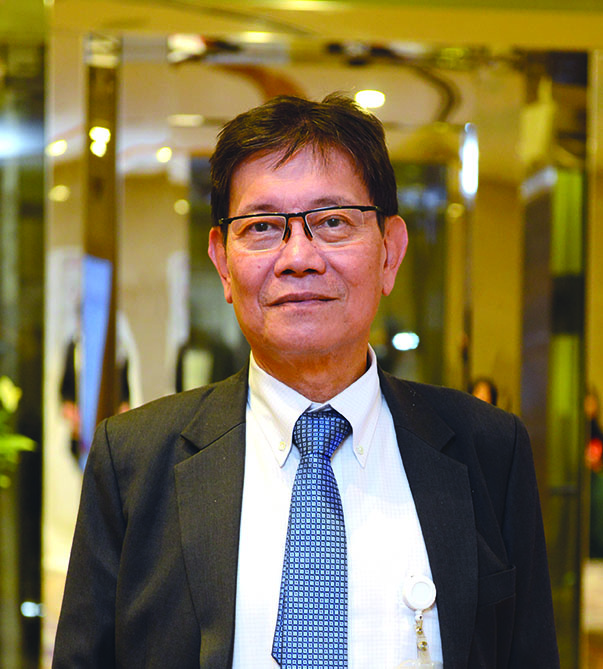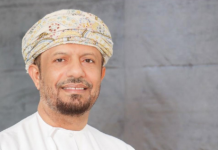Lee Chee Khian, CEO of Special Economic Zone Authority at Duqm, talks about how the region is getting kitted out to attract foreign investors and emerge as Oman’s manufacturing hub
How is manufacturing sector going to contribute to Oman’s future economic development? And how Duqm is going to be an enabler of this transition?
Currently the economy of Oman is very much dependent on hydrocarbon industry. The Sultanate needs to develop more value-added industries to enhance manufacturing sector’s contribution to the national GDP. Manufacturing is the backbone of any country’s economy. The sector needs to constitute 15 to 20 per cent of the country’s GDP so that it will give a good basis for diversification. Having said that, Oman has a lot of competitive advantages to develop its own indigenous industries in mining, fisheries, food processing, cements etc. There are unlimited opportunities, but we have to capitalise on our competitiveness. Every country has its own competitive edge and you need to focus on areas where you are competitive. That is what we are doing in Duqm. We are looking to develop key industries. Once the anchor customers come in, the rest will follow.
Duqm is at the forefront of government of Oman’s economic diversification strategy. How is the region getting kitted out to attract foreign investors and emerge as Oman’s manufacturing hub?
Oman continues to work toward creating a vibrant manufacturing sector. As many as $5bn has so far been invested in developing infrastructure facilities at Duqm. In a bid to attract both foreign and local investments in Duqm, the Special Economic Zone Authority at Duqm (Sezad) plans to invest $1bn per year for developing infrastructure at the free zone and adjoining areas. These investments are for building the remaining infrastructure work at the port, a liquid berth, a fisheries harbour, main roads, power transmission and distribution lines and water pipelines. There needs to be a hinterland of manufacturing to get raw materials from the outside and produce from inside; therefore, there must be a framework for flow of goods going both ways.
The seaport infrastructure will be complete in two years. We have an ambitious plan to create not just a normal container, bulk area port, but also a liquid terminal where oil and gas finished products will be exported. There will also be a storage area as well. We already have a dry dock to provide repair and maintenance services for them.
The construction work on the planned $513mn liquid terminal at the Duqm port to handle the import and export requirements of the refinery will start very soon. Presently, the Royal Boskalis is working on a detailed engineering design and mobilising equipment and materials for construction work. The construction will be completed in 32 to 33 months. This is in line with the development of the refinery as the refinery needs liquid berth to export finished products.
However, infrastructure development will take a considerable amount of time, and the pace of development will depend on the demand for land from the private sector. The planned investment for developing infrastructure is for a long period, ranging from 30 to 50 years.
Can you talk about the plans for the China-Oman industrial park in Duqm, the investments for which is expected to cross $10bn by 2022?
We are planning that project according to the resources we have. The first phase is for solar panels and tubular pipes. Some industries in this venture need gas, so we are going to plan the phasing of the investment based on gas availability.
A total of 10 agreements were signed between Wanfang Oman and some Chinese companies to implement $3.2bn worth projects at the China-Oman Industrial Park in Duqm. The 10 projects include building a manufacturing facility for solar energy equipment with a capacity of 1,000 gigawatt per annum, a factory for oil and gas services, water desalination plant, a facility for bromine exploration, a power plant, a five-star hotel, construction materials factory, a 4×4 vehicles factory and a factory for non-metal pipes used in oilfields.
Investors from China are weighing plans to develop a pair of methanol projects in Duqm. Can you talk about the progress of these projects?
The implementation of the proposed methanol projects hinge on the availability of natural gas as feedstock. The ventures are being mooted by two separate groups of Chinese investors. Both are trying to first secure gas supply before they can decide on the next steps. Both are also looking at alternative feedstock supplies besides piped gas, including condensate and liquefied natural gas (LNG). The projects have the potential to spawn the growth of downstream petrochemical businesses.
One of the two proposed methanol plants is backed by a Chinese group which has a subsidiary in the UAE. The other is mooted by investors based in the northeastern part of China where they source their feedstock requirements from Russia. They want to come to Duqm because their goal is to supply methanol to central Asia and the western part of China utilising the shorter route via the Pakistani port at Gwadar to access these markets.
And what are the key challenges facing the new industries coming up in Duqm?
The key industries are refinery, glass manufacturing, bio gas plant, pipe manufacturing, solar panel, methanol plant etc. But they all depend on the availability of gas. The main concern for the development of industries is the availability of gas. Another challenge is that of skilled manpower. Since Oman does not have a strong manufacturing base, we don’t have a trained labour force catering to the various new industries. It will take time for developing a trained workforce required for these industries. You have to train your labours starting from the construction time so that they will be ready by the time you start production.
Do you think Duqm development project will take off as expected?
It will take off, although we have some challenges. What we have is a chicken and egg issue. You need population for the development of the city, and for people to go there you need facilities such as hospitals and schools. But since there are no population, hospitals and schools are not ready to invest. Therefore you have to break this cycle. That is what we are doing by attracting investors and creating job opportunities. When people come for job and as they shift their families, schools and hospitals will follow.






